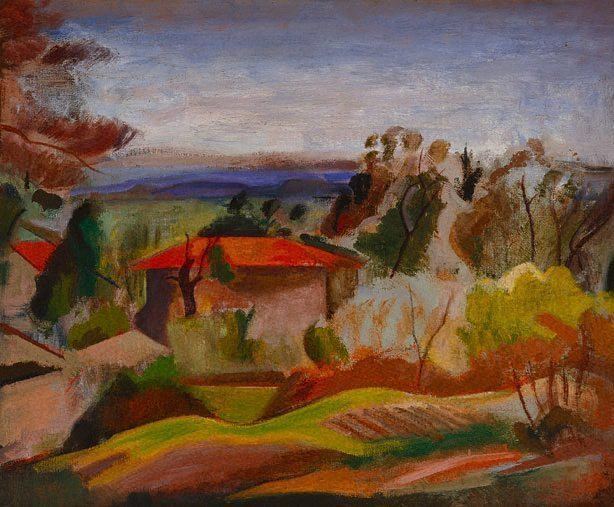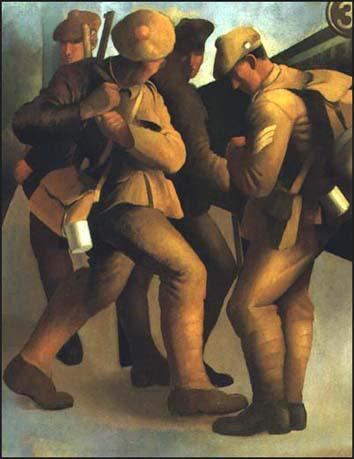Name Bernard Meninsky Role Artist | Children Philip Meninsky | |
 | ||
Died February 12, 1950, London, United Kingdom Artwork Victoria Station, District Railway | ||
Bernard Meninsky (25 July 1891 – 12 February 1950) was a figurative artist, painter of figures and landscape in oils, watercolour and gouache, draughtsman and teacher.
Contents
Early life
Meninsky was born in Konotop, in Ukraine. Although his family name was Menushkin, ‘it was unceremoniously entered as ‘Menisky’ by an English customs officer, whilst Meninsky himself added the second ‘n.’’ The family moved to Liverpool whilst Menisky was a baby. He attended the Liverpool School of Art from 1906 after initially attending evening classes in art. He won the King’s Medal in 1911 and went on to study briefly at Royal College of Art in London and the Académie Julian in Paris. After being awarded a scholarship Meninsky was able to study at the Slade School of Fine Art in 1912–13. In 1913 he worked for Edward Gordon Craig at his theatre school in Florence, later returning to teach at the Central School of Arts and Crafts, where he taught painting and drawing from 1913 until 1940.
World War I

During World War I, Meninsky served in the Royal Fusiliers, fighting with General Edmund Allenby in Palestine. The Ministry of Information commissioned Meninsky in May 1918 to produce a series of paintings based around the 'arrival of a Leave Train from the Front' at a London railway terminus. He was naturalised as a British Citizen in 1918 but had a nervous breakdown and was discharged from service after six months as a Ministry of Information war artist.
Later life

Bernard Meninsky held his first solo show at the Goupil Gallery in 1919 along with The London Group and the New English Art Club (NEAC). In 1920 he was appointed as a tutor of life drawing at the Westminster School of Art, where he was renowned as a superb figure draughtsman. In this period he was also associated with the bohemian Bloomsbury Group and the Garman sisters. He published Mother and Child: 28 Drawings in 1928 and illustrated the 1946 volume of Milton's poems L'Allegro and Il Penseroso. In 1935 he designed sets for the ballet 'David' for the Markova-Dolin Company. In 1940 he moved to Oxford City School of Art, and returned to the Central School in 1945.
Meninsky suffered from mental illness for much of his life and committed suicide in 1950.
A Meninsky memorial exhibition was organised by the Arts Council in 1951–52, and a retrospective show was staged at the Adams Gallery in 1958. His works are on show at the Arts Council, British Museum, Imperial War Museum, National Gallery of Ireland, Tate Gallery, Victoria and Albert Museum, and galleries in Hull, Leeds, Liverpool, Manchester, Nottingham and Sheffield.
